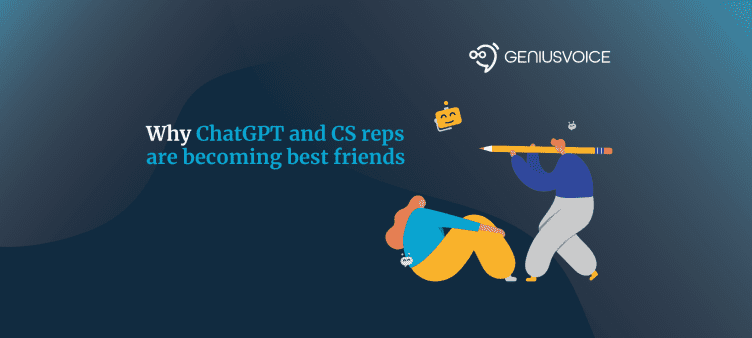

Imagine this: You're a customer service representative answering hundreds of calls and emails every day. Some questions are simple, but others are complex, requiring time and expertise. The queue is growing, and the pressure to assist everyone as quickly as possible is mounting. Efficiently navigating through multiple systems to retrieve customer information adds an extra layer of stress. These challenges are a daily reality in customer service.
New employees
The situation gets even more complex when, as a customer service representative, you're confronted with questions to which you don't know the answer. This could be because you're new to the company or because the question requires specific expertise you still need to get. The pressure to respond quickly is combined with the uncertainty of not knowing. The result is often stress, inefficiency, and potentially a dissatisfied customer.
Currently, answers to questions are found in internal knowledge bases, customer databases, and manuals. Additionally, employees receive training and can ask more experienced colleagues questions. But what if the employee could search for this information from one interface?
Generative AI
There has been much discussion recently about what large language models like ChatGPT will do in the future. In the short term, it is mainly used to write more efficiently and generate ideas. A frequently heard problem when implementing large language models to assist companies' customers is the following: There needs to be more control over exactly what is said to the customer.
So, on the one hand, we are dealing with an AI that knows a lot but still needs to be controlled by a human. On the other hand, we have an employee who has yet to learn everything but can check what the AI says before it is sent to a customer.
How it works
1. AI training
First, the AI is trained on the company's manuals, websites, frequently asked questions, and previous conversations. It learns to understand patterns, structures, and language use and establishes relationships between different pieces of information. This training process enables the AI to generate answers and solutions that align with the information in the manuals.
2. Question understanding
When a customer asks a question, the AI analyzes it to understand its context and purpose. This is done through Natural Language Processing (NLP), a technology that enables the AI to understand and interpret human language.
3. Answer generation
Based on its understanding of the question, the AI searches its knowledge base (based on the manuals) for relevant information. It then generates a suitable answer or solution to the question.
4. Review and editing by the employee
The customer service representative sees the generated answer and can check and adjust it as necessary. This ensures that the answer remains human and accurate and complies with any specific guidelines or policies of the company.
5. Feedback to the AI
Each intervention by the employee must be used to train and improve the AI model. This makes the AI increasingly accurate and helpful in the long term.
The advantage of this system is that it can significantly reduce the pressure on customer service representatives. They no longer have to search extensively for answers or solutions because the AI does this for them. Instead, they can focus on checking and refining the answers and delivering high-quality customer service. Moreover, AI can guarantee consistent service quality, regardless of the complexity of the question or the time of day.
What are the Benefits?
First Contact Resolution (FCR)
AI-driven answers can solve more problems on first contact. The AI can pull the correct information from the manuals and thus increase the percentage of questions answered immediately upon first contact.
Average Handling Time (AHT)
With an AI that generates most of the information, employees can significantly reduce the time needed to serve customers. They no longer have to search for information or solve complex problems, which can significantly shorten the average handling time.
Customer Satisfaction (CSAT)
Fast and accurate answers can significantly improve customer satisfaction. Customers can immediately receive the needed information, leading to a better experience and higher CSAT scores.
Net Promoter Score (NPS)
With improved customer service, customers may be more inclined to recommend the company to others, which could increase the NPS score.
Agent Engagement
Employees may feel more engaged and satisfied in their work by reducing the pressure of searching for information and answering complex questions. This can boost productivity and morale and reduce staff turnover.
Conclusion
In short, integrating AI in customer service can shift the balance from stress and inefficiency to increased productivity and customer satisfaction. By handling the less complex and routine questions, AI allows employees to focus on more complex questions and tasks requiring human expertise. The outcome significantly improves core KPIs such as FCR, AHT, CSAT, and NPS.
AI technology not only helps improve the performance of the contact center but also increases employee engagement by enabling them to focus on what they are good at - empathetic and personal customer contact. This is a significant step forward in the evolution of customer service that benefits both employees and customers.


